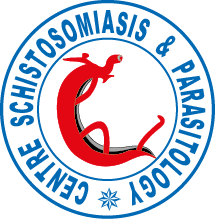Large-scale determinants of intestinal schistosomiasis and intermediate host snail distribution across Africa: does climate matter?
Abstract
The geographical ranges of most species, including many infectious disease agents and their vectors and intermediate hosts, are assumed to be constrained by climatic tolerances, mainly temperature. It has been suggested that global warming will cause an expansion of the areas potentially suitable for infectious disease transmission. However, the transmission of infectious diseases is governed by a myriad of ecological, economic, evolutionary and social factors. Hence, a deeper understanding of the total disease system (pathogens, vectors and hosts) and its drivers is important for predicting responses to climate change. Here, we combine a growing degree day model for Schistosoma mansoni with species distribution models for the intermediate host snail (Biomphalaria spp.) to investigate large-scale environmental determinants of the distribution of the African S. mansoni-Biomphalaria system and potential impacts of climatic changes. Snail species distribution models included several combinations of climatic and habitat-related predictors; the latter divided into “natural” and “human-impacted” habitat variables to measure anthropogenic influence. The predictive performance of the combined snail-parasite model was evaluated against a comprehensive compilation of historical S. mansoni parasitological survey records, and then examined for two climate change scenarios of increasing severity for 2080. Future projections indicate that while the potential S. mansoni transmission area expands, the snail ranges are more likely to contract and/or move into cooler areas in the south and east. Importantly, we also note that even though climate per se matters, the impact of humans on habitat play a crucial role in determining the distribution of the intermediate host snails in Africa. Thus, a future contraction in the geographical range size of the intermediate host snails caused by climatic changes does not necessarily translate into a decrease or zero-sum change in human schistosomiasis prevalence.
Keywords:
Africa; Biomphalaria; Climate change; Disease ecology; Growing degree day; Intermediate host snail; Schistosoma mansoni; Schistosomiasis; Species distribution modelling
